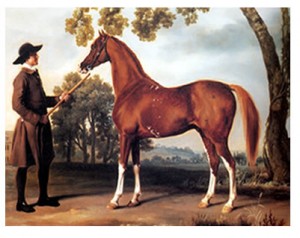The Paint Horse for Art Day
As a child I loved Piebald and Skewbald horses and today I still have a fascination for the vibrancy of coloured horses either in film or on canvas. Coloured horses have enjoyed a long and varied history in art. From the coloured horses of folk lore and gypsy wagons, to strong and labouring horses that pulled wagons, to the American Indians and beyond. The worlds talented artists have captured the strength, grace and patterned beauty of coloured horses down through the ages.
Below is an article About Paint Horses by Rebecca Matthews from http://www.ehow.com and a small selection of artwork depicting the irresistible coloured horse.
Alfred-de-Dreux “Skewbald stallion”
About Paint Horses
By Rebecca Matthews, eHow Contributor www.ehow.com
History
The paint horse has a history as colorful as the breed. According to historians, the first paint horse was brought the Americas in 1519 by Spanish explorer Hernando Cortes. It is said that of the horse he traveled with one was a “pinto” with white stockings and the other was a dark roan with white patches. By the 1800’s, the West was full of wild horses sporting the colorful markings of the paint horse. They also were a favorite of the American Indians.
Willa Frayser “Heart and Soul”
Registry and Association
The paint horse went through many registries before ending up as the American Paint Horse Association that stands today. The first registry set up to preserve the colored equines was the Pinto Association started in the 1950s. Around 1962, another group of paint enthusiasts started the American Paint Stock Horse Association (APSHA). A third association was started around the same time called the American Paint Quarter Horse Association. This association struggled and eventually merged with the American Paint Stock Horse Association in 1965. With the merger came the name American Paint Horse Association that we know today.
Johann Greorg Van Hamilton Piebald stallion at the Eisgruber Stud 1700
Solid-Paint Bred
While the paint horse is known for its colorful markings, not all paints have spots. Solid paint horses, once known as breeding stock, are registerable with APHA as long as the foal is out of two registered paint horses. There is no limit to what can be done with a solid-paint bred horse. They are still eligible for shows as any other paint horse would be. All solid colors are accepted.
The Grovner Arabian – artist unknown
Patterns
Patterns of a paint horse are colorful and sometimes confusing. There are three distinct patterns:
Tobiano, which is defined as the dark color covering one or both flanks, also features four white legs. The spots are oval or round and extend over the neck and chest. The tail can be two colors and the head is marked like that of a solid horse.
Overo, which is defined as the white not crossing the back of the horse. One or all legs are dark. The white is scattered with no true pattern, and the tail is usually a single color.
Tovero leaves the horse predominately white other than around its ears, mouth, chest and neck and around its flank. One or both eyes are blue.
Willa Frayser Wind Chaser
Function
Paint horses can do it all. They are used in both English riding, such as dressage, and Western riding, such as cutting, reining and working ranch horse. Paint horses race and drive. There are many opportunities for paint horse owners to show their spotted equines all year long at various venues around the United States.
Read more: About Paint Horses | eHow.com http://www.ehow.com
Willa Frayser www.willafrayserstudio.com





Leave a Reply